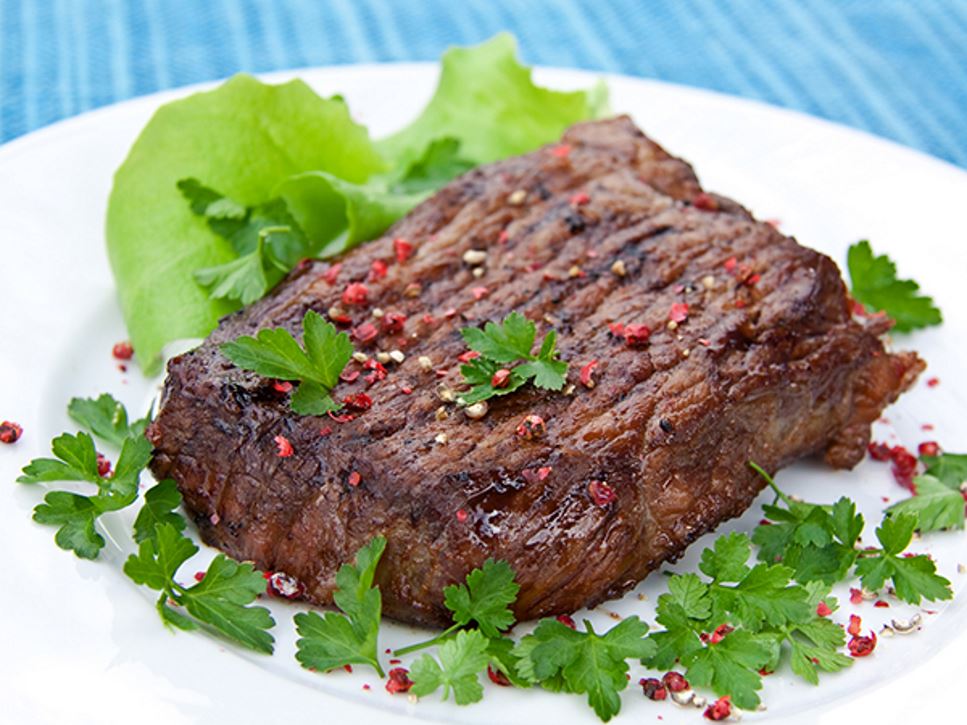Although bison have been roaming the North American Plains for hundreds of years, their meat is a relative newcomer to dinner tables in the U.S.
Since eating a diet low in saturated fat may help lower the risk of heart disease, nutrient-rich bison has gained a great deal of acceptance and bison burgers, chili, stews and other dishes are popping up in kitchens across the country. If you enjoy red meat but want to limit saturated fat in your diet, bison — with its sweet, rich flavor — is a practical and versatile choice.
A 3-ounce grass-fed cooked bison burger has 152 calories, 7 grams of total fat and 3 grams of saturated fat. This same serving of bison is relatively low in cholesterol (60 milligrams), is an excellent source of vitamin B12 and a good source of iron.
Since it is leaner than other red meat, bison easily can be overcooked. Braising or stewing work best with large, less tender cuts, such as the brisket. Broiling, grilling and pan frying are ideal for thinner cuts, including sirloin tip and inside round steaks. Enjoy ground bison in hamburgers, chilies, meatballs, pasta sauces, fajitas, nachos and stroganoff. Bison also can be substituted for beef in most dishes.
Found in farmers markets, local supermarkets or specialty stores, bison is sold by numerous online companies as well. Use or freeze ground raw bison within two days, or three to five days for large cuts. Uncooked ground bison can be frozen up to four months and large cuts up to nine months.
Karen Ehrens, RD, Nicole Anziani, MS, RD, CDN, CLC, and Chef J. Hugh McEvoy, CRC, CEC, contributed to this article.
Find a Nutrition Expert
Looking for credible nutrition information and recommendations? The Academy of Nutrition and Dietetics' network of credentialed food and nutrition practitioners are ready to help!
